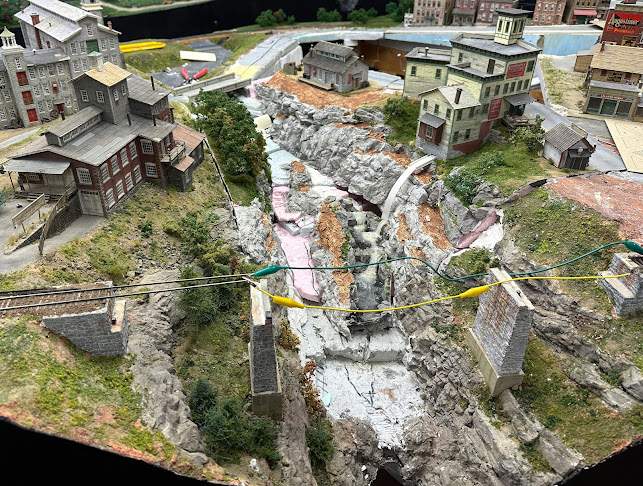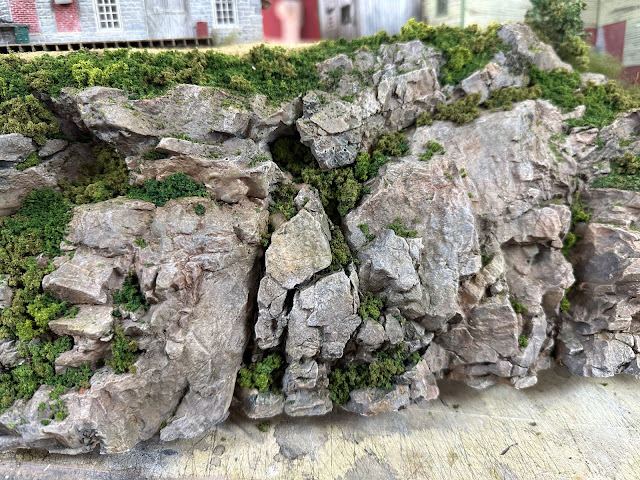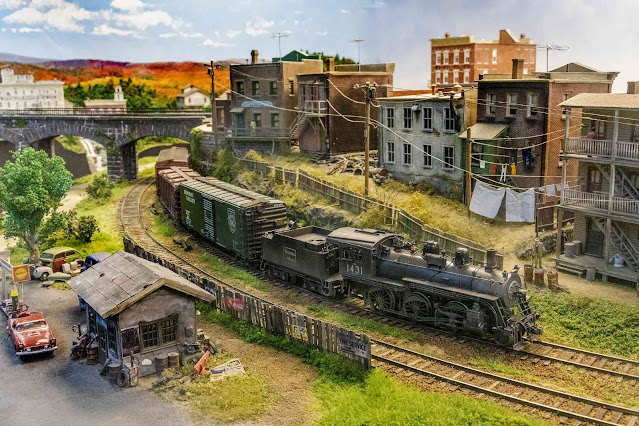The Millville build
Millville is one of the largest (almost 40 sq.ft.) & most challenging areas to fully develop. In addition to the city proper, it abuts a river that fronts Delabarre Tap &Die and the Threadwell Mills complex on the opposite side of the river.
I started the Millville area over 20 years ago. In recent years, I’ve redone the track, moved the Cambridge Crossing complex and added a couple pieces of Dick Elwell’s Hoosac Valley railroad. These areas have worked around the edges of the city which, once completed will set the stage to complete the inner part.
My current focus is the river valley with the original, one-off Robinson Electric building on the city side & Delabarre on the other side. So, let’s get started….
Robinson’s Electric, Delabarre & the River…
Looking at the river valley, two things became apparent to me right away. First, this river/building scene is at least two decades old, and it showed. The river scene was dusty and worn. On one of his last visits, Dick Elwell pointed out that there was a dead mouse in the river. Due to it extremely desiccated state, I surmise it had been there for quite a while…
…OK, time for a change. As I decided to rip out the majority of the river scene, some things came to my attention. First, I took a look at the original Robinson‘s and realized that it was slightly for what I had done with Millville to date & envisioned for the rest of the city. Second, I still had my original diorama for the kit of Robinson‘s Electric. This was one of my favorites & I had decided some time ago that I would not sell it. Needless to say, I now had a path forward (a place for the Robinson’s Diorama)…

Original river scene - done in 2005
Original river scene - done in 2005
(One more) Original river scene - photo from about 2005
An idea forms and I do some prep work...
I put a mock up of the kit version of Robinson's next to the original freelance & decide to go head with the site modifications and installation of the kit version of Robinsons.
(Tear down follows)
Tearing out the river and much of the old rock work.
Putting things back together
As can be seen in the previous photos, there are some styrofoam blocks and supports put in place to start the test fitment.
Okay, after running the diorama through my large bandsaw, I have two major pieces. I start to see the first “adjustments” that need to be done.
Modifications to the above photo.A. Make two diorama into three diorama pieces by removing the river/falls section.
B. Cut out the stone building and reposition at an angle to the main building.
C. Add preliminary layers to middle section to re-establish the riverbed.
D. Start adding new stone work to the large (right hand side) diorama section.
At this point (moving forward) I moved these three sections around between my layout & my work bench, gradually building them up, modifying, re-fitting & so on. Given how deep into the layout this area is, it was the only practical way to proceed. At the deepest part I crawl under the layout and pop up at the end where the dam is.
More to come soon....































